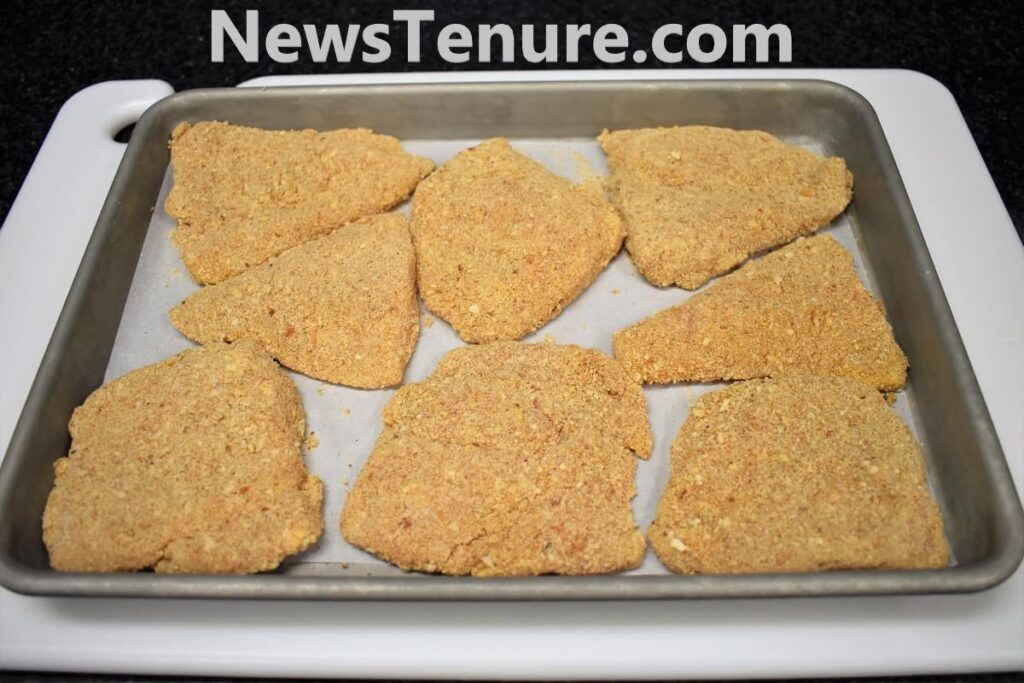Breading is a culinary technique that can transform ordinary ingredients into extraordinary dishes. Whether you’re new to cooking or looking to up your kitchen game, this comprehensive guide will walk you through the art of breading, offering tips, tricks, and step-by-step instructions to achieve crispy perfection.
What is Breading?
Breading is a cooking method that involves coating food items with a mixture of dry ingredients, typically consisting of flour, beaten eggs, and breadcrumbs. The primary purpose of breading is to create a crispy and flavorful outer layer while sealing in the natural juices and flavors of the food. It’s a versatile technique used to prepare a wide range of dishes, from fried chicken to crispy eggplant Parmesan.
The Essentials: What You’ll Need
Before we dive into the nitty-gritty of breading, let’s ensure you have the essential tools and ingredients on hand. You’ll need:
Ingredients:
- Food items: This could be chicken, fish, vegetables, or anything you want to bread.
- All-purpose flour: For the initial coating to help the egg adhere to the food.
- Eggs: Beaten eggs serve as the “glue” that helps breadcrumbs stick to the food.
- Breadcrumbs: Panko, regular, or seasoned, depending on your preference.
- Seasonings: Spices, herbs, and salt to add flavor to the breading.
Tools:
- Bowls: You’ll need at least three shallow bowls for the flour, eggs, and breadcrumbs.
- Tongs: For handling the food during the breading process.
- Frying pan or oven: To cook the breaded food.
- Thermometer: To check the food’s internal temperature for safety and doneness.
The Breading Process
Now, let’s break down the breading process into simple steps.
1. Prepare Your Workstation
Before you start breading, ensure that you have all your ingredients and tools set up and organized. This helps to make the process smoother and less messy.
2. Season the Food
Before breading, season your food with salt, pepper, and any other desired spices. This ensures that the flavors penetrate the food.
3. Dredge in Flour
- Take one piece of seasoned food and coat it lightly in all-purpose flour. This helps the egg adhere to the food.
- Shake off any excess flour to ensure a thin, even layer.
4. Dip in Beaten Eggs
- After the flour, dip the food into a bowl of beaten eggs. Ensure it’s thoroughly coated.
5. Coat with Breadcrumbs
- Next, place the food in a bowl of breadcrumbs. Ensure an even coating by pressing the breadcrumbs gently onto the food.
- You can use regular breadcrumbs or panko breadcrumbs, depending on the texture you desire.
6. Rest and Set
- After breading, let the food rest for a few minutes. This helps the breading adhere better and prevents it from falling off during cooking.
7. Cook to Perfection
- The final step is cooking the breaded food. You can choose to fry it in a pan with oil for a crispy finish or bake it in the oven for a healthier option.
- Make sure the food reaches the desired internal temperature for safety.
Tips for Success
Breading can be a bit tricky for beginners, so here are some tips to ensure your dishes turn out perfectly:
- Maintain a Clean Workstation: Keep your work area organized and clean to avoid a messy cooking experience.
- Season Generously: Season your food with care; this is where the flavor begins.
- Use One Hand for Wet Ingredients, One for Dry: To prevent your hands from getting overly coated, designate one hand for dipping in wet ingredients and the other for dry.
- Rest the Breading: Allowing the breaded food to rest before cooking helps the coating adhere and prevents it from falling off during cooking.
- Monitor Oil Temperature: If you’re frying, keep an eye on the oil temperature to avoid overbrowning or undercooking.
- Drain Excess Oil: After frying, place the cooked food on a paper towel to drain any excess oil.
- Experiment with Flavors: Don’t be afraid to get creative with your breading. Try different spices, herbs, or even grated Parmesan cheese for added flavor.
Popular Breading Recipes
Here are a few popular dishes that use breading to achieve that delightful crispiness:
- Fried Chicken: The ultimate comfort food, fried chicken features a seasoned breading that locks in the juices, resulting in a crispy, succulent treat.
- Schnitzel: A classic German dish, schnitzel is made by breading and frying thin slices of meat, usually pork or veal.
- Eggplant Parmesan: This vegetarian favorite involves breading and frying eggplant slices, layering them with marinara sauce and cheese, and baking until bubbly and delicious.
- Fish and Chips: Breading is essential for achieving the crispy exterior of the fish in this classic British dish.
- Onion Rings: These deep-fried delights are made by breading and frying thick slices of onion until they’re golden brown and crunchy.
Conclusion
Breading is a fantastic cooking technique that can take your dishes to the next level. Whether you’re frying up chicken or preparing a vegetarian delight like eggplant Parmesan, mastering the art of breading is sure to impress your taste buds and anyone lucky enough to share your meal. So, roll up your sleeves, gather your ingredients, and start breading your way to crispy perfection today!




